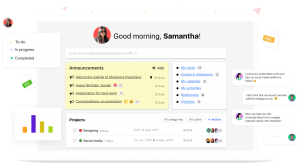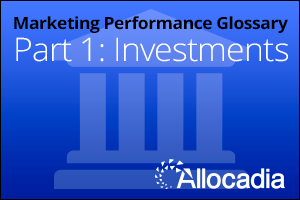Search Engine Optimization (or SEO for short) can seem a bewildering subject reserved for specialists and experts in the field. Indeed, sales teams of some agencies out there would prefer to keep it that way: having you believe that only they can help you attain good rankings in search engines justifies their bonuses and keeps them in a job.
Whilst SEO can be complicated and there are many benefits to be had by enlisting the services of someone knowledgeable and experienced in the industry, there are many basic concepts and techniques any business owner can use for their own website which can have a huge positive impact on their rankings.
We’ll start with one of the oldest and still most influential SEO ranking factors:
#1: the Title Tag, which succinctly summarises what a webpage is about. You can see the title tag of any page on the internet simply by hovering your mouse cursor over the browser tab of the page as shown below:

The title tag for the homepage of Amazon reads “Amazon.co.uk: Low Prices in Electronics, Books, Sports Equipment & more”
The title tag is important because search engines still place a lot of emphasis on it as a ranking factor. Search engines analyse the words used in the title tag (along with a number of other factors) and assume that the page must contain content that is relevant to the terms displayed therein. Anyone using terms in a search query that match the terms in the title tag will likely be returned a set of search results of pages that contain these terms in the title tag.
Let’s take the search term “reasons to give up coffee” as an example:

As you can see , every result shown contains the keywords searched for (or variations of them) in the title tag (the large blue text).
The takeaway: the title tag should contain terms and variations of terms that people might use to find your business or service offering. When they don’t, your webpages and website are going to be that much harder to find.
It can of course be a bit more complicated than that, the point is that I continue to see company websites that contain the single word “Home” in the title tag of every page of their site!
Simply ensuring that every page of your website has a short, accurate description of the content of the webpage in question will massively increase the visibility of your website in the search engines.
Title Tag Guidelines:
Keep it short, around 50 characters (including spaces) and no more than 70 ideally. Google uses pixel width to determine when and where to truncate the title tag, if it’s too long, it will be cut off ungracefully in the search results and look less enticing to potential visitors to click on.
Keep it accurate – Keyword stuffing such as “buy white trainers, cheap white trainers to buy, cheapest trainers, bargain trainers” is not cool and is so 2003. “Buy cheap white trainers online | Yourbrandname.com” will suffice.
#2: Webpage Content – Write for people, not robots
It is a good idea to ensure your webpage uses the same and similar keywords to those in the title tag. Whilst this is common sense – your business sells vintage brandy online so naturally, your content will talk about vintage brandy – it is not a licence to go keyword crazy. Not so long ago, it was common practice to “game” the search engines into ranking your webpage well for a given term by “stuffing” the webpage full of that term and variations of it over and over and over and OVER again! Very soon, webpage content was being written for search engines first and people second, even though it was the people who the websites were trying to attract!
Here is an example from a website still doing it today – try and guess what they sell:
“These types of courses are sometimes called One Week Intensive Driving Courses Birmingham, One Week Intensive Driving Lessons Birmingham, One Week Crash Course Driving Lessons Birmingham, One Week Driving Courses Birmingham or Fast Pass Courses Birmingham
This would have worked in the early 00s, but now it is more likely to get you penalized by the search engines and simply isn’t worth the risk. Search engines such as Google have gotten very clever at understanding the content of a webpage, the context it is being used in and the meaning and intent behind it.
As a result, you should try and produce web page content that is as useful as possible to visitors of the page interested in your service. Place yourself in their shoes – what information would they need in order to make a decision on whether to invest in your product or service? The more helpful and useful your content is, particularly with regards to your competitors, the better your webpages will rank.
Google rewards useful content as this excerpt from their own blog has said
“The goal of many of our ranking changes is to help searchers find sites that provide a great user experience and fulfil their information needs. We also want the “good guys” making great sites for users, not just algorithms, to see their effort rewarded. To that end we’ve launched Panda changes that successfully returned higher-quality sites in search results.”
#3: Google Search Console
Most people have Google Analytics installed on their website but often Google Search Console (formerly Google Webmaster Tools) is forgotten.
Google Search Console is a collection of tools and resources to help website owners, webmasters, web marketers and SEO professionals monitor website performance in the Google search index. It helps you understand how Google crawls, analyses and indexes your website, and is a great tool to help you discover problems which might hurt your rankings or user experience.
Whilst I could write an entire series of posts on the various tools and features available within Google Search console, here are two you should know about:
Fetch As Google
This is a great tool that few people know about. When you create a new webpage or change the content of a webpage (updating those title tags I told you about for example!) you have to wait for Google to come along and take a look around your site for any changes you’ve made. Depending on how “important” your website is, this can take days or even weeks which is a problem (if you sell last minute concert tickets for this weekend, for example).
Fetch as Google allows you to instruct Google to visit a specific page of your website more or less immediately. This means you can get a brand new page indexed or webpage changes showing in the search results as soon as it is created or changed. Why wait days and weeks when it only takes minutes?
Search Analytics Data
This report in Google Search Console shows you what keyword searches your website is being shown for within Google search results (as well as which ones people are clicking on to visit your site) and provides an excellent source of keyword ideas that you can use to strengthen the content of your webpages:

#4: Links
You’ve probably heard that having other websites “link” to your website helps with your website rankings and that is entirely true – In simple terms, Google views a link to a website as a vote or endorsement. So if website A links to website B regarding a particular topic, website A is endorsing website B for that topic helping Google to conclude that it should rank website B when people search for information on that topic.
However, the days of getting as many links as possible from anywhere and everywhere are long over, and just with keyword stuffing, trying to game Google’s search engine by accruing links in an unnatural and aggressive way will lead to a penalty such as Google’s Penguin penalty.
You want links, but you want good links. What separates the good from the bad?
Good links are:
- From authoritative sites
- Earned rather than paid for (i.e. in an article rather than as an advert)
- Contextually relevant
- Naturally placed within the content rather than shoehorned in for the sake of it
- In the main body of the content on a page (rather than in the comments or in a sidebar)
- On pages which people look at and interact with
- Ideally followed (information on what this means here)
This link to German supermarket Edeka ticks many of the boxes:

It is in a prominent position in an article on the Guardian, which is an incredibly authoritative website. This authority, combined with the amount of social shares and reader engagement (in the form of comments) gives the link a lot of punch as it will drive traffic that is already positively engaged with the brand. The link is not followed, however, meaning that Edeka’s website will not benefit as much from the ‘trickle down’ effect of the linking site’s authority.

This link from a directory that will remain unnamed ticks none of the boxes. The first mistake is the exact match anchor text URL which is a no-no for search engines. The second mistake is the short, keyword-heavy description which doesn’t offer any value to the reader, and the biggest mistake is that the link is on a webpage that the normal web user will never see! Furthermore the link was not earned and doesn’t really help anyone by existing. This is a great example of a link for a link’s sake – a thankfully outdated approach to SEO.
#5: Get a blog
A well-maintained blog is an incredibly powerful tool, both in SEO terms and in customer value. It allows you to demonstrate knowledge and expertise in your niche, to provide value to readers (whether they are potential customers or not), and to pull traffic to your website that may well convert if they like what they see.
The benefits of a blog in a nutshell:
- You can answer your customers’ questions and build a resource centre to help inform their purchases
- Each post is a fresh new page for Google to index
- Each post is a fresh new opportunity for you to post something shareable on social media
- Some blog posts will continue to attract visitors and leads long after posting
- Your content will attract external links, and allow you to direct visitors around your site with contextually relevant internal links
Some sources would have you believe that the adage “build it and they will come” is applicable to business blogs; this is no longer the case. It’s more like “build it, maintain it well, take pride in your creation, and they might come”. That shouldn’t put you off trying though – it just means that it’s easier than might expect to reach a level of quality on your business’ blog that’s way above the average (and the associated benefits).
The trickiest part about writing a blog for your business is establishing and maintaining the balance between writing for your customers and writing for search engines. Certain blogging platforms have plug-ins that can advise you on the correct amount of SEO factors in your content and help you tweak accordingly (see the screenshot of the Yoast WordPress plug-in below for an example), but each business writer will need to gauge their readers’ interests and engagement style to establish the best content strategy.
Check back next month for a dedicated post on how to get your business blog up and running, titled “5 blogging basics every business blogger should know.”
Digital & Social Articles on Business 2 Community(37)








